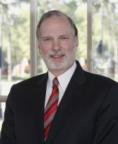
Joseph E. Bavaria, MD, President
STS News, Fall 2016 -- I’ve been traveling the world nearly my entire life, and I’ve had the good fortune of meeting with cardiothoracic surgeons on six continents.
As I think about these meetings and my colleagues around the world, what strikes me the most is not our differences, but our commonalities. Whether you’re working in Jamaica or Japan, Italy or Iceland, once we make an incision, we see the same things. The anatomy is the same; an aorta in Belgium is the same as an aorta in Brazil.
Common Questions
No matter where I travel, I am asked many of the same questions. My colleagues want to know what’s new—what’s new in technology, what’s new in my health care system, what’s new in my OR, and what’s new at STS.
I always am eager to exchange information about the latest medical technology and clinical trials in cardiothoracic surgery, especially when it comes to transcatheter aortic valve replacement, aortic dissection, and rapidly developing technology (e.g., LVADs).
I also enjoy conversations about the STS National Database. Cardiothoracic surgeons around the world are realizing that patient outcomes are pivotal to their populations and their governments. We talk about how recent improvements in the Database make the data more representative and statistically significant and are a more sophisticated measure of how we help our patients.
Cardiothoracic diseases are not confined within borders, and cardiothoracic surgery is not a sovereign state.
Desire for Collaboration
Cardiothoracic surgeons belong to a tightknit global community that craves collaboration. One of the Society’s strategic plan goals is to foster collaboration and connection worldwide. As part of this initiative, STS surgeon leaders routinely attend national and international cardiothoracic surgery meetings in Europe and Asia, and we’re taking steps to increase the Society’s presence in Latin America. Some of the articles in The Annals of Thoracic Surgery recently were published in Chinese. The Society also is working with other organizations on collaborative clinical practice guidelines and efforts to harmonize database definitions and standards to further optimize and standardize patient care.
In addition, the STS foundation is looking for cardiothoracic surgeons who can provide their time and expertise to previously underdeveloped countries that are building cardiothoracic surgery programs of their own.
Dave Fullerton told us during his Presidential Address at the 2015 STS Annual Meeting that the burden of noncommunicable diseases—such as cardiovascular disease and lung cancer—is growing astronomically, especially in the developing world.
The global cardiothoracic surgery community needs to come together and help out these countries and their populations. Every time I have visited a developing or emerging nation, I have been impressed by how the health care teams do more with less. We can all learn lessons about being more efficient with fewer resources; I have never left a country without learning something new.
Access to Training
Despite our intense willingness to collaborate, we have stumbling blocks that will be hard to surmount.
One of the biggest challenges is in surgeon training. Many young cardiothoracic surgeons outside the United States want to spend 6 months or a year in the US as part of a fellowship or training program. Visa requirements and the regulatory environment make that difficult. We need to work on this as a global community; we need to provide more training opportunities for energetic young cardiothoracic surgeons.
Increased use of the internet has helped ease some of the problems with access to education. STS recently expanded its online educational platform to include a robust Learning Management System, offering the entire Thoracic Surgery Curriculum, textbooks, videos, and case presentations (see related story).
The Society also is considering new in-person educational programs that will be conducted outside of the United States in collaboration with our regional partners. Although the STS Annual Meeting offers an unparalleled opportunity for interactive education and scholarly debate (see related story), we realize that not all cardiothoracic surgeons have the time or the means to attend the meeting in person.
Nevertheless, it’s vital that we find ways to learn from each other. Cardiothoracic diseases are not confined within borders, and cardiothoracic surgery is not a sovereign state. Our treatments and solutions are transferrable across continents and countries. We all need to take steps that will increase our exchange of information.
Cardiothoracic surgeons speak the same language, and our patients will benefit from our remembering that.